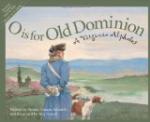Always, in the consideration of colonial homes, Shirley is regarded as one of the finest examples. This means much more than at first appears. For the mansions with which Shirley is usually compared, were built from half a century to a century later.
Continuing along the road as we studied the home, we were led around to the landward front and into the midst of the ancient messuage.
[Illustration: Riverward front of Shirley.]
We stood in a great open quadrangle, having the house at one end, the distant barns at the other; on one side the kitchen, a large two-story building, and on the other side a similar building used for storage and for indoor plantation work. A high box hedge ran across from one of these side buildings to the other, dividing the long quadrangle into halves, one part adjacent to the house and the other to the barns.
The village effect produced by the grouped buildings must have been even more striking in colonial times; for then the manor-house was flanked by two more large brick buildings, forming what might be called detached wings. One of these was still standing up to the time of the Civil War.
The visitor is conscious of two dominant impressions, as he stands thus in the midst of this seventeenth century homestead. The massive solidity of the place takes hold of one first; but, strangely enough, the strongest impression is that of an all-pervading air of youthfulness. Doubtless the oldest homestead on the river, and one of the oldest in the country, it utterly refuses to look its age. Perhaps the solid, square compactness of the buildings has much to do with this. They appear as though built to defy time. Even the shadow of the venerable trees and the ancient ivy’s telltale embrace seem powerless to break the spell of perennial youth.
In the home, we met Mrs. Bransford, widow of Mr. H.W. Bransford, Commander and Mrs. James H. Oliver, U.S.N., and Miss Susy Carter. Mrs. Bransford and Mrs. Oliver are the daughters of the late Mr. and Mrs. Robert Randolph Carter, and are the present owners of the plantation, Mrs. Bransford making her home there. Commander Oliver represents the third consecutive generation of naval officers in the Shirley family.
Upon entering the house in the usual way, from the landward side, the visitor finds himself in a large square hall occupying one corner of the building. This room discloses at a glance the type and the genius of Shirley. It begins at once to tell you all about itself; and when you know this old hall, you have the key to the mansion and to its story. It is truly a colonial “great hall.” It tells you that by its goodly old-time ampleness, its high panelled walls with their dimming portraits, its great chimneypiece flanked by tall cupboards, and its massive overshadowing stairway.
[Illustration: The old “Great hall.”]




